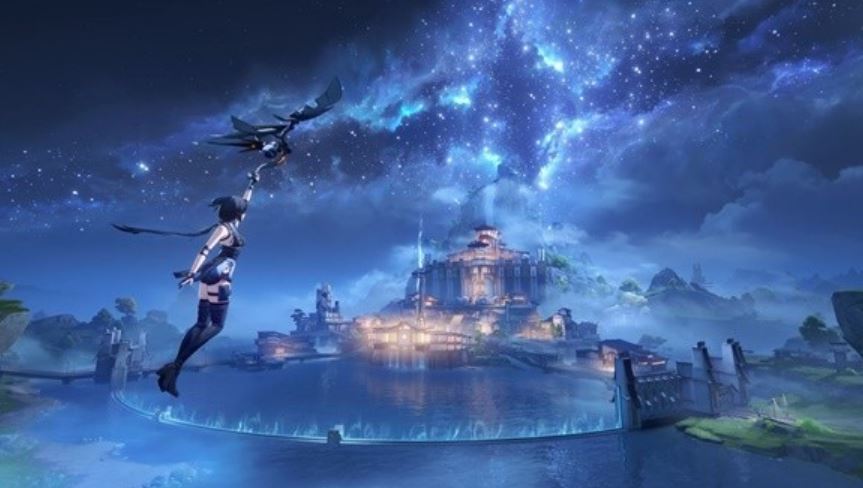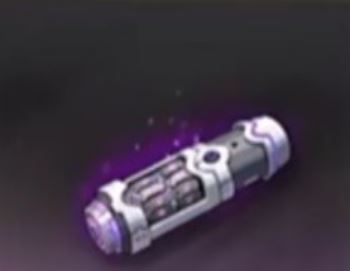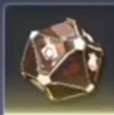Wuthering Waves: Echo Type, Set Effects, and Combinations Explanation

Types of Echo
1.1 COST Value Classification
Echo types can be classified into three categories based on their COST values: C(OST) 4, C3, and C1 levels. The COST value can be likened to the weight of goods. Just as a person has a limited carrying capacity, so does a resonator have a limited capacity for Echoes. When the total COST value of all Echoes on a character reaches the limit, no more Echoes can be equipped.
Naturally, the higher the COST value of an Echo, the higher its corresponding strength. C4-level Echoes are mostly map BOSS Echoes, such as the familiar Crownless. C3-level Echoes are all composed of elite monsters, such as the Rock Fighter (stone man). And C1-level Echoes are the small monsters in the world.
The impact of different COST values on Echoes lies in the type of primary attributes. Each Echo has two primary attributes, one fixed primary attribute and one random primary attribute, as follows:
- C4 Echoes: The fixed primary attribute is numerical attack power, and there are six random primary attributes, namely percentage defense, percentage attack power, percentage HP, healing effectiveness, critical rate, and critical damage.
- C3 Echoes: The fixed primary attribute is numerical attack power, and there are five random primary attributes, namely percentage defense, percentage attack power, percentage HP, resonance efficiency, and elemental damage bonus.
- C1 Echoes: The fixed primary attribute is numerical HP, and there are three random primary attributes, namely percentage defense, percentage attack power, and percentage HP.
1.2 Rarity Classification
Echoes themselves also have a basic attribute of rarity. Based on this, Echoes can be divided into four quality categories: gold, purple, blue, and green, in decreasing order of quality, with gold being the highest and green being the lowest.
So, what impact does the quality of Echoes have on Echoes themselves? In the Test of Symphony, we can see that the higher the quality, the higher the upper limit of Echoes, the more maximum secondary attributes, and the higher the numerical values of primary attributes at the same level, as follows:
- Gold Quality: The maximum level can reach 25, with a maximum of 5 secondary attributes (one unlocked every five levels).
- Purple Quality: The maximum level can reach 20, with a maximum of 4 secondary attributes.
- Blue Quality: The maximum level can reach 15, with a maximum of 3 secondary attributes.
- Green Quality: The maximum level can reach 10, with a maximum of 2 secondary attributes.
1.3 Other Echoes
In addition, among these Echoes, there is a relatively special existence—Phantom Echoes. We can understand it as a homomorphism of an Echo, with the only difference being in appearance from ordinary Echoes. However, this kind of Echo is currently only possessed by some specific Echoes (as of the Symphony Test), and its natural refresh rate is relatively low, making it difficult to obtain. (A certain unlucky person hasn’t caught a shiny Squirtle even after the test, guess who it is).
Echo Sets and Their Effects
In addition to the basic primary and secondary attributes, an Echo also has a set attribute to determine which set it belongs to. Whenever a character equips 2/5 different Echoes with the same set attribute, the set effect can be activated. (Note: They must be Echoes with different names! For example, equipping two Crownless Echoes will count as two in terms of numerical calculations, but only count as one when activating the set effect).
As of the Symphony Test, there are nine types of Echo sets in the Echo Tide:
- Sunset Eclipse (Annihilation Set): Increases Annihilation damage by 10% (2 pieces); after using normal attacks and heavy attacks, Annihilation damage increases by 7.5%, stacking up to 4 layers, lasting 15 seconds.
- Frozen Night White Frost (Condensation Set): Increases Condensation damage by 10% (2 pieces); after using normal attacks or heavy attacks, Condensation damage increases by 10%, stacking up to 3 layers, lasting 15 seconds.
- Thunder Resonance (Conductive Set): Increases Conductive damage by 10% (2 pieces); after using heavy attacks or Resonance skills, Conductive damage increases by 15%, stacking up to 2 layers, lasting 15 seconds.
- Melting Mountain Rifting Valley (Thermomelt Set): Increases Thermomelt damage by 10% (2 pieces); after using Resonance skills, Thermomelt damage increases by 30%, lasting 15 seconds.
- Howling Valley Long Wind (Aerodynamic Set): Increases Aerodynamic damage by 10% (2 pieces); after using Variation skills to enter the field, Aerodynamic damage increases by 30%, lasting 15 seconds.
- Drifting Star Dispel Darkness (Diffraction Set): Increases Diffraction damage by 10% (2 pieces); after using Variation skills to enter the field, Diffraction damage increases by 30%, lasting 15 seconds.
- Hidden World Return Light (Healing Amplification Set): Increases healing effectiveness by 10% (2 pieces); after using Extension skills, the attack power of all resonators in the team increases by 15%, lasting 30 seconds.
- Light Cloud Emerging Moon (Charge Amplification Set): Increases resonance efficiency by 10% (2 pieces); after using Extension skills, the attack power of the next resonator to enter the field increases by 22.5%, lasting 15 seconds.
- Everlasting Echo (Attack Speed Switch Set): Increases attack power by 10% (2 pieces); while on the field, self-attack power increases by 5% every 1.5 seconds, stacking up to 4 layers, and Extension damage increases by 60%.
Echo Skills
As one of the features of the Echo system, the Echo skills in the Echo Tide are diverse and can be roughly divided into the following categories:
- Transformation Skills: Characters can directly transform into Echo for attacks or provide special effects such as healing, counterattacks, long-distance displacement, etc. (e.g., Squirtle’s dancing healing, Dugtrio’s underground escape, Scyther’s counterattack, Golem’s charge). (By the way, Big Brother’s motorcycle can be ridden again!)
- Obtaining Echo So how do we obtain Echo? According to existing information, there are several methods to obtain Echo:
- Exploration in the Great World: In the Great World, we can defeat residual image monsters to obtain Echo. The drop rate and quality of Echo depend on the level of the data dock (we’ll talk about the data dock below). At the same time, there is a chance to encounter anomalies in the Great World, dropping anomaly Echoes. This is the most basic and cost-effective way for players to obtain Echo (after all, it doesn’t require stamina).
- Silent Zone Challenge: By clearing the Silent Zone and obtaining rewards using stamina, players can obtain specific sets containing Echoes. However, there are certain restrictions on the types and qualities of Echoes obtained—they can only be of the types already owned (for example, you can only get Golem’s Echo if you have obtained Golem’s Echo before; if you haven’t obtained Golem’s Echo before, it won’t appear in the rewards). Currently, the highest quality seems to depend on the world level.
- Specific Challenges: After completing challenges such as holographic levels (single boss battles), adversity deep tower (abyss), deep fall strange realm (meat pigeon), players will receive specific currency, which can be used to exchange for golden-quality anomaly Echoes.
- Data Fusion: Through the data fusion module of the data dock, players can randomly convert five unenhanced Echoes into new Echoes of owned types (similar to the rules of the Silent Zone), with the quality of Echoes depending on the level of the data dock. The basic yield for conversion is one Echo, and there is a chance to obtain additional output, which depends on the quality of Echo and COST value.
- Special Acquisition: During the exploration of the Great World, we will see areas on the map with red-glowing, specially named super high-level residual images (such as the level 110 Giant Rock Guardian, which is the Stone Man). These residual images have extremely high damage, health, and defense, making them difficult to defeat. If the damage is insufficient, they can only be defeated by dodging and counterattacking to deduct a percentage of the enemy’s health. However, these residual images will inevitably drop Echoes when defeated, and they will definitely be of golden quality, effectively increasing the damage of characters in the early stages. (When fighting, pay attention to two points: don’t be greedy with attacks, and don’t break the defense.)
Echo Cultivation and Matching
5.1 Echo Upgrading
Wanderers need to pay attention to several points when upgrading Echoes.
First, unenhanced Echoes cannot be used as experience packages, and enhanced Echoes can only provide 75% of the total experience used as experience packages. The following image shows the experience material Sound Cylinder (quality grading is similar to Echo).

Secondly, the activation of secondary attributes. Every five levels of Echo will have an additional “slot” for secondary attributes (as seen in section 1.2 above). At this time, corresponding tuners of Echo quality are needed (for example, golden Echoes require golden tuners, which can be obtained through exploration in the Great World, silent zone challenges, and simulated training grounds). There are many types of secondary attributes, including percentage types such as resonance efficiency, critical rate, critical damage, attack, defense, health, normal/strong/resonance skill/resonance liberation damage bonuses, and numerical types such as attack, defense, and health. Primary attributes and secondary attributes can be repeated, but secondary attributes cannot be repeated.
The following image shows the tuner (golden quality).

Considering the above two points and my own experience in the Sonata test, materials related to Echo cultivation are very scarce, especially experience materials. Therefore, I suggest that wanderers should take every five levels as a step for upgrading and unlocking secondary attributes. This way, losses can be minimized in time to avoid wasting experience (because if an Echo embryo is wasted, using it as an experience package will result in a loss of 25% of the original experience, which is very painful). For example, when cultivating Main C, if my secondary attributes consecutively were percentage defense and numerical defense, I could stop investing experience in time.
5.2 Echo Matching
The Echoes carried by characters are limited in quantity and COST. A character can carry up to 5 Echoes (fixed), and the upper limit of COST increases with the level of the data dock, up to a maximum of 12 COST.
When the player’s COST is less than 12 points in the early stage, my suggestion is to focus on the main slot of Echo and place attack-type BOSS Echoes, carrying the remaining secondary slots as needed. Because in the early stages, a large part of the damage dealt by players comes from Echo skills (after half a day of fighting, the monsters are wiped out by Big Brother’s Echo skills), carrying BOSS Echoes is conducive to early-stage exploration.
By the time the COST value reaches 12 points in the later stage, we can consciously equip characters with five sets to activate the set effects. Generally, due to the rules of set activation (see part 2.Echo set), the optimal combination is 43311, that is, one C4, two C3s, and two C1 Echoes, which not only ensures the overall strength of Echoes but also activates the set.
Of course, for the future, 44111 may also be an option, but since it requires two BOSSes with the same attribute but different names, as of the Sonata test, only Thunder attribute characters can effectively use this combination.